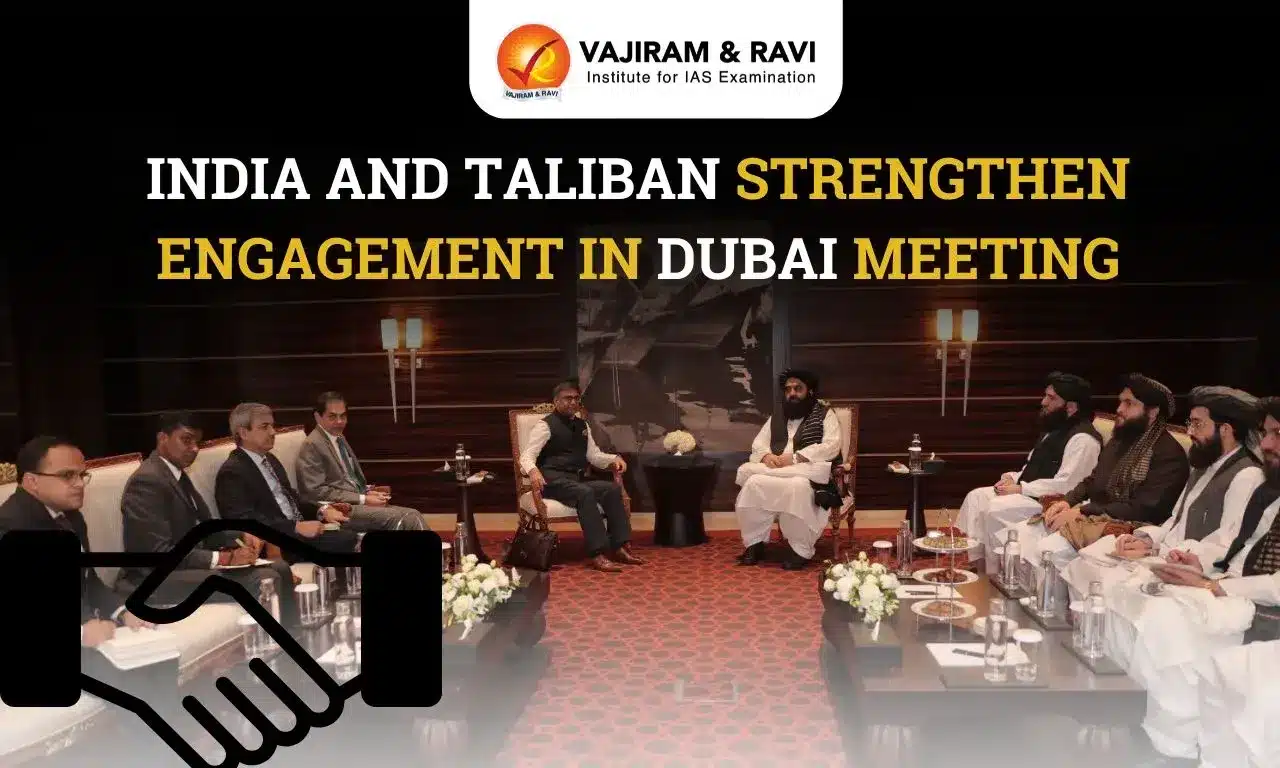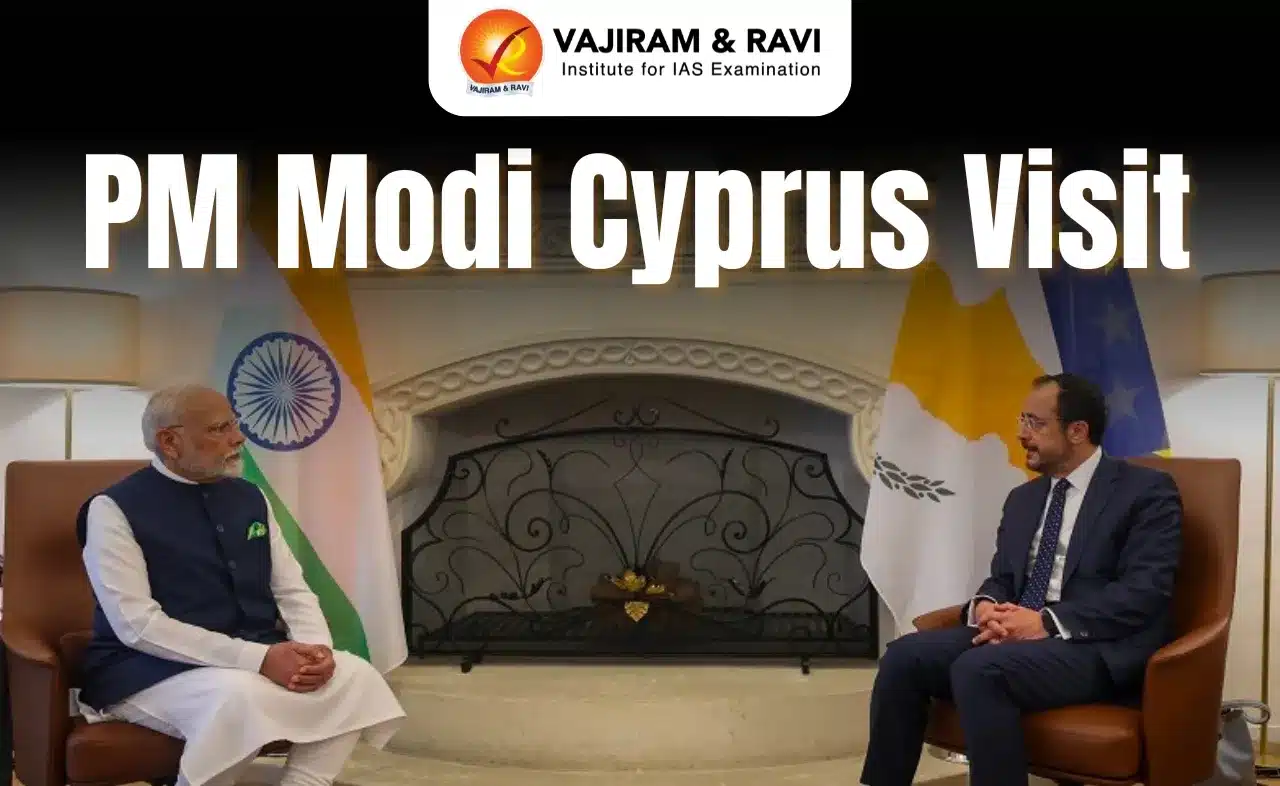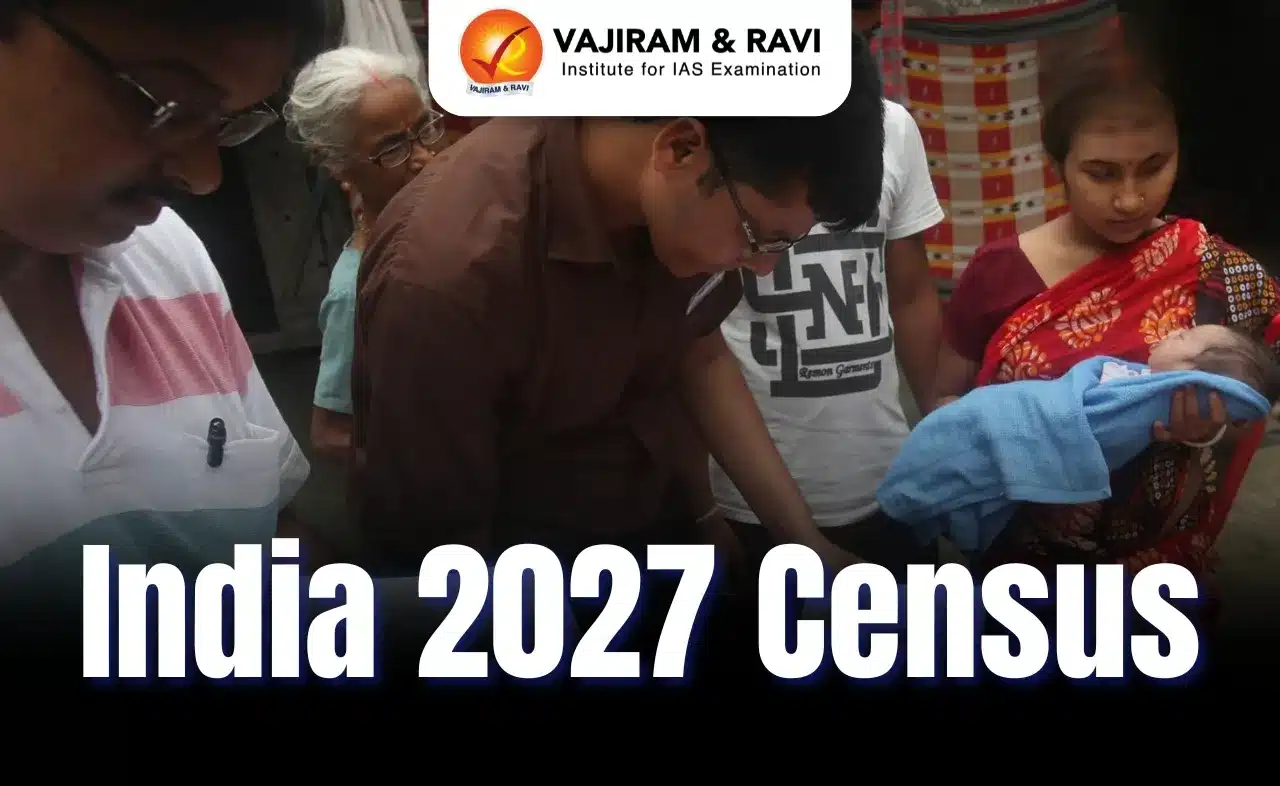What’s in today’s article?
- Why in News?
- Background of India-Taliban Engagement
- India’s First High-Level Engagement with the Taliban
- Key Factors Behind India’s Engagement
- Challenges and Opportunities
- Conclusion
Why in News?
A high-level meeting between Afghan Taliban leadership and senior Indian officials was held in Dubai, with Indian Foreign Secretary Vikram Misri and Taliban Acting Foreign Minister Mawlawi Amir Khan Muttaqi in attendance.
The meeting aimed to strengthen cooperation between India and Afghanistan, as bilateral ties have largely remained dormant since the Taliban’s 2021 takeover, despite India’s limited continued aid to Afghanistan.
Background of India-Taliban Engagement
- India’s Stance on Taliban Governance
- India, like other major powers, does not officially recognize the Taliban regime due to its lack of inclusivity and treatment of women and girls.
- However, India’s engagement aims to strengthen ties with the Afghan people and support humanitarian and developmental needs.
- Evolution of India-Taliban Engagement
- Initial Contact (2021): Indian Ambassador Deepak Mittal met Taliban leaders in Doha days after the Taliban seized power.
- Subsequent Meetings: Indian officials maintained low-key engagements, including Joint Secretary J P Singh’s meetings with Taliban leaders in 2022.
- Increased Engagement: A technical team was stationed at the Indian embassy in Kabul to ensure continuity in projects.
- The Current Meeting
- The meeting occurred against the backdrop of Afghanistan’s strained ties with Pakistan over the activities of the Pakistan Taliban and retaliatory airstrikes.
- Dubai was chosen as a neutral venue for this high-level meeting, facilitated by the UAE government, which maintains strong ties with both India and the Taliban.
India’s First High-Level Engagement with the Taliban
- About the news
- Foreign Secretary Vikram Misri met Afghanistan’s Acting Foreign Minister Amir Khan Muttaqi in Dubai, marking India’s first high-level bilateral engagement with the Taliban regime.
- This meeting signalled an upgrade in India’s official engagement, which had previously involved only Joint Secretary-level officials.
- Key Discussion Areas
- Security Concerns
- India emphasized the importance of preventing anti-India terror groups from operating on Afghan soil.
- India raised concerns about Pakistan-based terror groups like Lashkar-e-Taiba (LeT) and Jaish-e-Mohammed (JeM).
- The Afghan side acknowledged and expressed sensitivity to India’s security concerns.
- Development and Humanitarian Aid
- India pledged to evaluate development projects in Afghanistan alongside ongoing humanitarian assistance.
- India has already dispatched significant aid, including food, medicines, vaccines, and earthquake relief materials. Additional support for healthcare and refugee rehabilitation was agreed upon.
- Chabahar Port for Trade and Aid
- Both sides agreed to promote the use of Iran’s Chabahar port to facilitate trade and humanitarian aid to Afghanistan.
- India’s use of the port has received a reprieve from US sanctions.
- Strengthening Sports Ties
- Enhanced cooperation in cricket was discussed, with India supporting Afghan players in training and providing facilities in Noida.
- Security Concerns
- Humanitarian Assistance Delivered So Far
- India has sent: 50,000 MT of wheat; 300 tons of medicines; 27 tons of earthquake relief aid; 40,000 liters of pesticides; Millions of vaccine doses and hygiene kits; Winter clothing and stationery kits.
- Future Engagement and Collaboration
- The two sides agreed to maintain regular contact at various levels to facilitate ongoing and future cooperation.
- This engagement keeps the door open for future political-level discussions.
- Notable Omissions
- The MEA’s statement did not address issues such as women’s rights, minority inclusion, or broader human rights concerns under the Taliban regime.
Key Factors Behind India’s Engagement
- Pakistan-Taliban Strains
- Once allies, Pakistan and the Taliban are now adversaries, with tensions escalating over border issues and Pakistani airstrikes on Afghan territory.
- Iran’s Diminished Role
- Iran is preoccupied with internal and external conflicts, including restoring deterrence after attacks by Israel, reducing its focus on Afghanistan.
- Russia’s Reorientation
- Russia is caught in its war with Ukraine and shifting towards cooperation with the Taliban as a counter-terrorism ally.
- China’s Growing Influence
- China has established diplomatic ties with the Taliban and is pursuing development projects and resource exploration under its Belt and Road Initiative.
- US Policy Uncertainty
- With Donald Trump’s return to the White House, potential re-engagement by the US with the Taliban is anticipated, prompting India to act swiftly.
Challenges and Opportunities
- Challenges:
- Suppression of women’s and minority rights by the Taliban.
- Security threats from groups like Islamic State Khorasan Province.
- Opportunities:
- Increased stability in Afghanistan.
- Taliban’s willingness to safeguard Indian interests and collaborate on development initiatives.
Conclusion
India’s engagement with the Taliban in Dubai signals a calculated approach to secure its strategic interests while balancing regional stability and humanitarian goals. This dialogue positions India at the forefront of shaping Afghanistan’s future amidst a complex geopolitical landscape.
Although India has not granted official recognition to the Taliban government, this engagement aims to protect national and security interests, especially as regional power dynamics evolve.
Q.1. What were the key discussion areas in the India-Taliban Dubai meeting?
Discussions focused on security, development, and humanitarian aid. India emphasized countering terror groups and explored trade via Chabahar port, while both sides agreed to collaborate on development projects and aid delivery.
Q.2. Why is India engaging with the Taliban despite challenges?
India seeks to protect its strategic interests, counter regional power shifts, and support Afghan stability. Though the Taliban’s governance remains controversial, India’s engagement ensures a foothold in Afghanistan’s evolving geopolitics.
Last updated on June, 2025
→ UPSC Notification 2025 was released on 22nd January 2025.
→ UPSC Prelims Result 2025 is out now for the CSE held on 25 May 2025.
→ UPSC Prelims Question Paper 2025 and Unofficial Prelims Answer Key 2025 are available now.
→ UPSC Calendar 2026 is released on 15th May, 2025.
→ The UPSC Vacancy 2025 were released 1129, out of which 979 were for UPSC CSE and remaining 150 are for UPSC IFoS.
→ UPSC Mains 2025 will be conducted on 22nd August 2025.
→ UPSC Prelims 2026 will be conducted on 24th May, 2026 & UPSC Mains 2026 will be conducted on 21st August 2026.
→ The UPSC Selection Process is of 3 stages-Prelims, Mains and Interview.
→ UPSC Result 2024 is released with latest UPSC Marksheet 2024. Check Now!
→ UPSC Toppers List 2024 is released now. Shakti Dubey is UPSC AIR 1 2024 Topper.
→ Also check Best IAS Coaching in Delhi
























